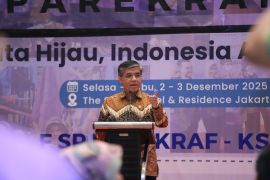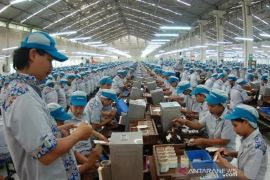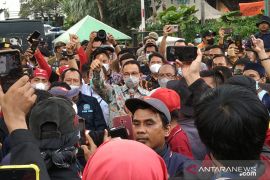At a virtual discussion participated from here on Monday, Putri revealed that the minimum wage setting was aimed at encouraging growth in regions, with a wage range below the average value of consumption need.
Echoing Putri's statement, expert member of the National Wage Board Jojo Santosa noted that the regulation aimed at realizing justice between regions in Indonesia.
Government Regulation No. 36 of 2021 issued in reference to Law No. 11 of 2020 on Job Creation covers changes within the minimum wage setting regulation.
In the earlier regulation, the minimum wage setting was based on sectors in addition to the provincial minimum wage and district or city minimum wage.
Within the new regulation, the minimum wage setting will only include the provincial and district or city minimum wage as well as the minimum wage exception for micro, small, and medium enterprises.
The new wage regulation also covers two formulae to calculate the minimum wage, specifically the minimum wage adjustment for regions that have them and the setting formula designed for regions that will apply them.
In accordance with the new regulation, the minimum wage is set based on the manpower and economic conditions, the variables of which comprise the purchasing power parity, workforce absorption rate, and wage median.
Minimum wage adjustment is conducted annually and is done within the upper and lower limit value range.
The upper limit value for the minimum wage is calculated based on average consumption per capita, the average number of household members, and the average number of household members that work in each household.
The bottom limit value of minimum wage is calculated by multiplying the upper limit of minimum wage by 50 percent.
Related news: Manpower Ministry to determine 2022 minimum wage
Related news: House member seeks solution to decide minimum wage in 2022
Related news: Cianjur district head voices support for minimum wage raise demand
Translator: Prisca Triferna, Fadhli Ruhman
Editor: Sri Haryati
Copyright © ANTARA 2021












